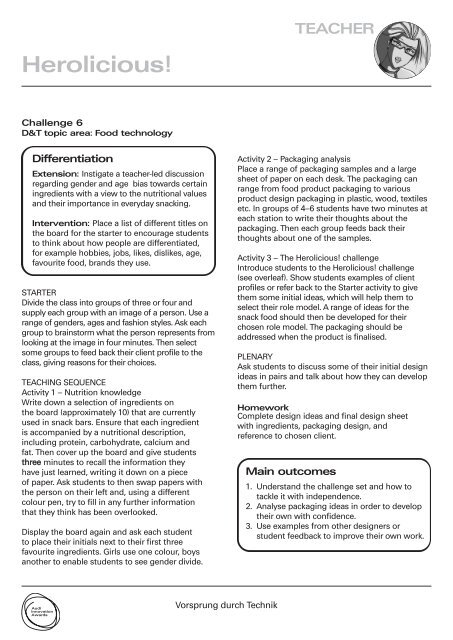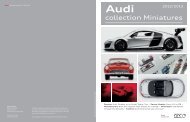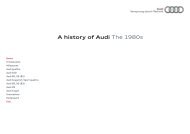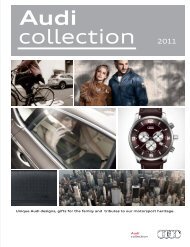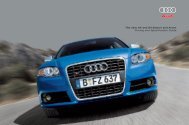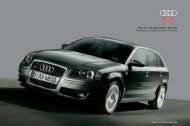The perfect Plecticle - Audi
The perfect Plecticle - Audi
The perfect Plecticle - Audi
You also want an ePaper? Increase the reach of your titles
YUMPU automatically turns print PDFs into web optimized ePapers that Google loves.
Herolicious!<br />
Challenge 6<br />
D&T topic area: Food technology<br />
Differentiation<br />
Extension: Instigate a teacher-led discussion<br />
regarding gender and age bias towards certain<br />
ingredients with a view to the nutritional values<br />
and their importance in everyday snacking.<br />
Intervention: Place a list of different titles on<br />
the board for the starter to encourage students<br />
to think about how people are differentiated,<br />
for example hobbies, jobs, likes, dislikes, age,<br />
favourite food, brands they use.<br />
STARTER<br />
Divide the class into groups of three or four and<br />
supply each group with an image of a person. Use a<br />
range of genders, ages and fashion styles. Ask each<br />
group to brainstorm what the person represents from<br />
looking at the image in four minutes. <strong>The</strong>n select<br />
some groups to feed back their client profile to the<br />
class, giving reasons for their choices.<br />
TEACHING SEQUENCE<br />
Activity 1 – Nutrition knowledge<br />
Write down a selection of ingredients on<br />
the board (approximately 10) that are currently<br />
used in snack bars. Ensure that each ingredient<br />
is accompanied by a nutritional description,<br />
including protein, carbohydrate, calcium and<br />
fat. <strong>The</strong>n cover up the board and give students<br />
three minutes to recall the information they<br />
have just learned, writing it down on a piece<br />
of paper. Ask students to then swap papers with<br />
the person on their left and, using a different<br />
colour pen, try to fill in any further information<br />
that they think has been overlooked.<br />
Display the board again and ask each student<br />
to place their initials next to their first three<br />
favourite ingredients. Girls use one colour, boys<br />
another to enable students to see gender divide.<br />
Vorsprung durch Technik<br />
TEACHER<br />
Activity 2 – Packaging analysis<br />
Place a range of packaging samples and a large<br />
sheet of paper on each desk. <strong>The</strong> packaging can<br />
range from food product packaging to various<br />
product design packaging in plastic, wood, textiles<br />
etc. In groups of 4–6 students have two minutes at<br />
each station to write their thoughts about the<br />
packaging. <strong>The</strong>n each group feeds back their<br />
thoughts about one of the samples.<br />
Activity 3 – <strong>The</strong> Herolicious! challenge<br />
Introduce students to the Herolicious! challenge<br />
(see overleaf). Show students examples of client<br />
profiles or refer back to the Starter activity to give<br />
them some initial ideas, which will help them to<br />
select their role model. A range of ideas for the<br />
snack food should then be developed for their<br />
chosen role model. <strong>The</strong> packaging should be<br />
addressed when the product is finalised.<br />
PLENARY<br />
Ask students to discuss some of their initial design<br />
ideas in pairs and talk about how they can develop<br />
them further.<br />
Homework<br />
Complete design ideas and final design sheet<br />
with ingredients, packaging design, and<br />
reference to chosen client.<br />
Main outcomes<br />
1. Understand the challenge set and how to<br />
tackle it with independence.<br />
2. Analyse packaging ideas in order to develop<br />
their own with confidence.<br />
3. Use examples from other designers or<br />
student feedback to improve their own work.


